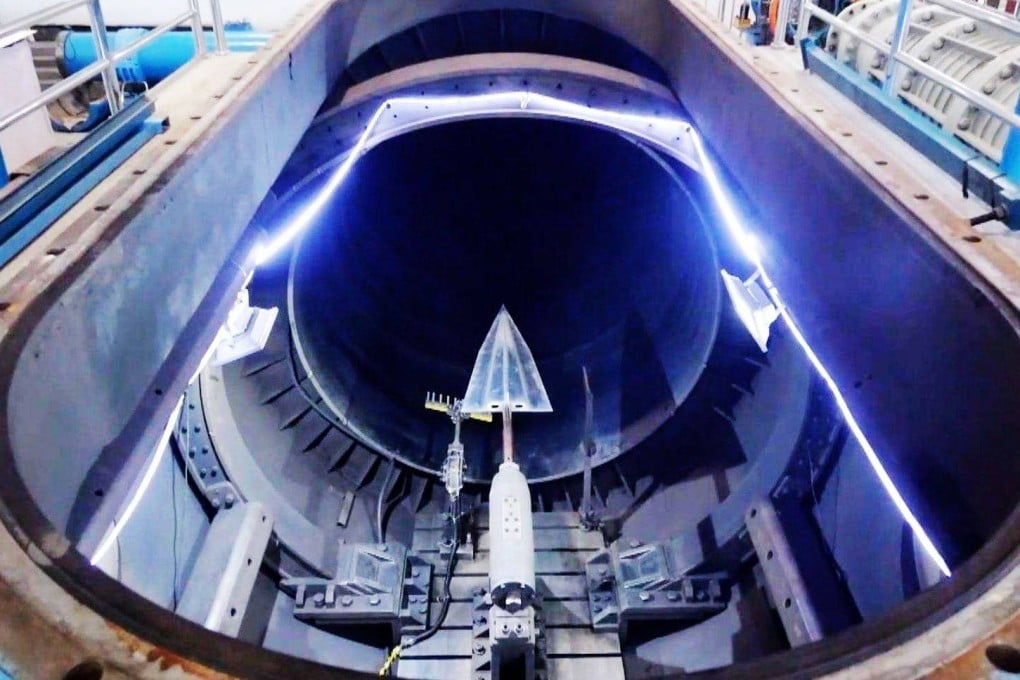China’s secret wind tunnel is key to testing hypersonic missiles and avoiding airborne mistakes: paper
- Researchers reveal the essential role of a hidden test facility in China’s advanced programme but its name, location and how long it has run remain classified
- Test failures have dogged the US mission to have an operational hypersonic weapon

The facility’s name, location and top Mach rating remained classified, but it had played an important role in China’s hypersonic weapons programme, allowing ground tests that could expose critical engineering and technological issues before missiles go up for a test flight, the researchers said.
A hypersonic missile can fly five times the speed of sound, or faster, for thousands of kilometres in the atmosphere, relying on a small rocket booster to push it to near-hypersonic speed.
The newly revealed Chinese wind tunnel is not only large enough to house a full hypersonic missile, but can create environments to simulate the different stages of flight throughout the test, according to researcher Cui Jie with the Beijing Power Machinery Institute in a conference paper released on the China Academic Journal Network Publishing Database last week. Secrecy surrounds how long the Chinese facility has operated.
